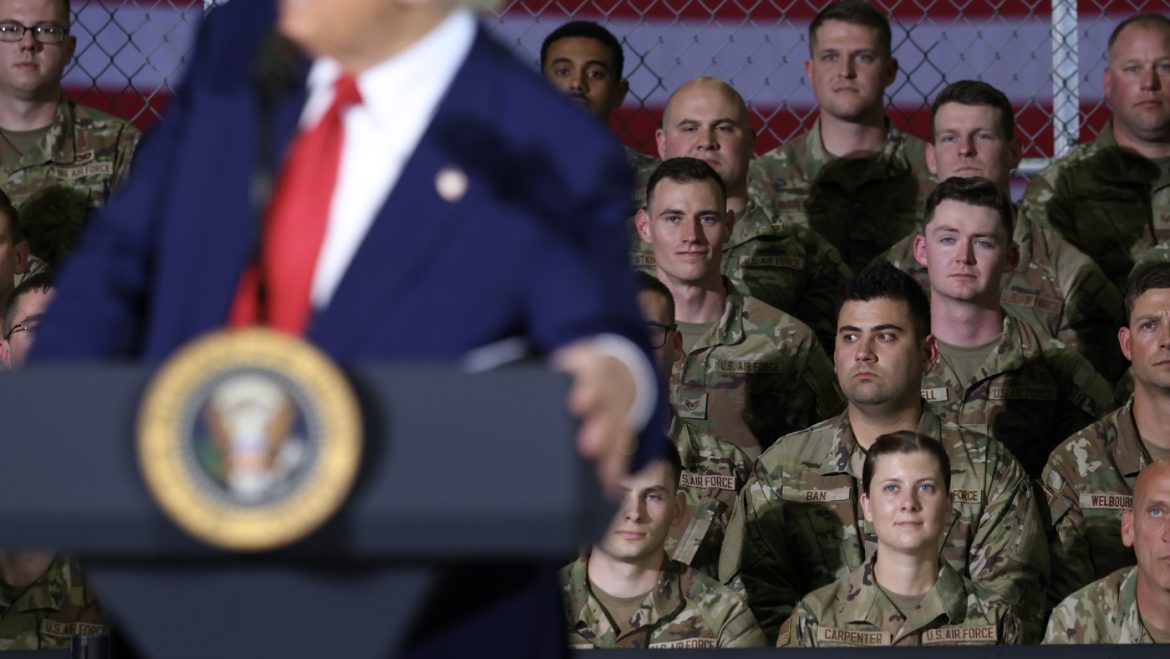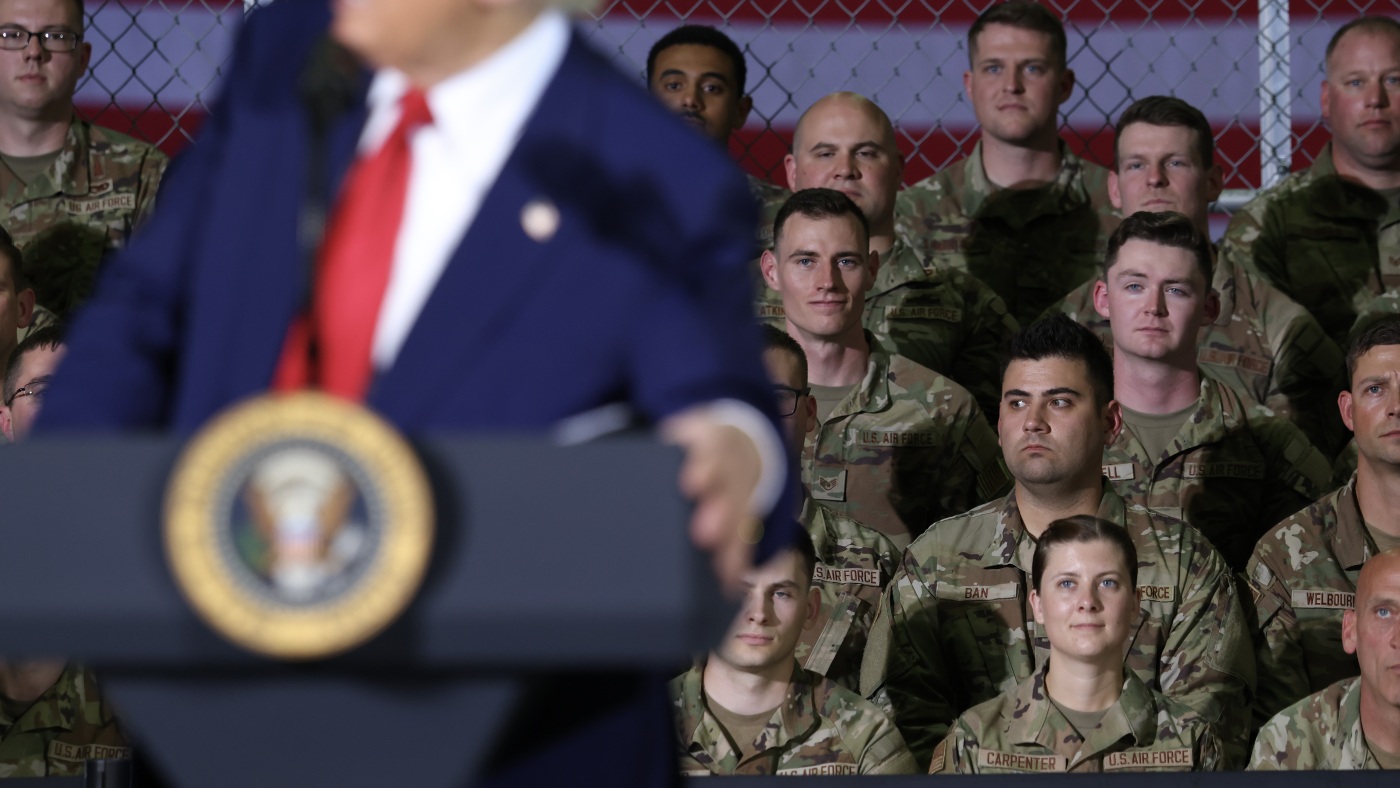Expansion of U.S. Immigration Enforcement: DHS Requests 20,000 National Guard Troops and Additional Officers
The Department of Homeland Security (DHS), under directives from former President Donald Trump’s administration, has sought a significant increase in manpower to enforce immigration laws more aggressively. Central to this drive is a recent request for approximately 20,000 National Guard troops in conjunction with an order to add at least 20,000 new officers dedicated to deportation and border enforcement efforts.
—
Context and Scale of the Request
The request to the Pentagon involves deploying roughly 20,000 National Guard forces to assist DHS in immigration enforcement operations, including the removal of migrants living in the U.S. without legal status. This marked a historical expansion, as traditionally National Guard members have played support roles at the border, such as surveillance or logistics, but have not been mobilized to execute deportation orders or direct immigration arrests on this scale.
Beyond the National Guard, President Trump ordered DHS to increase its deportation workforce by 20,000 officers, significantly expanding the agency’s capacity to execute removals and enforce immigration laws. This combined total of new personnel represents one of the largest expansions of immigration enforcement manpower in recent U.S. history.
—
Operational Implications and Support Roles
The request underscores a shift from traditional border enforcement to “interior immigration enforcement,” where the focus extends beyond border crossings to locating and deporting unauthorized immigrants residing throughout the country. It also signals a broader approach involving state and local law enforcement officers, alongside federal agents.
This move followed a period during which illegal crossings at the U.S.-Mexico border had reached historic lows, attributed partly to heightened enforcement efforts already in place. However, the DHS and Trump administration viewed increased personnel as necessary to deter undocumented immigration and encourage “self-deportation”—the voluntary departure of migrants due to intensified enforcement presence.
—
Military Involvement and Legal Considerations
The deployment of National Guard troops for immigration enforcement introduces complex legal and political considerations. Typically, the National Guard operates under dual authority: state governors control their activation, but the federal government can also mobilize them under certain conditions. Despite the federal request, governors retain the discretion to approve or deny troop deployment for such missions.
This request is notable as it is reportedly the first time National Guard forces have been asked en masse to directly assist in deportation efforts rather than merely border surveillance or humanitarian support roles. Concerns have risen among National Guard members and immigrant advocates about the militarization of immigration enforcement, the scope of mission definitions, and the potential for constitutional and humanitarian issues.
—
Political and Fiscal Uncertainty
The vast scale of the requested manpower expansion introduces questions surrounding funding, logistics, and sustainability. Reports indicate uncertainty about how this expansion would be financed, especially amid simultaneous political efforts to reduce federal budget expenditures elsewhere.
The deployment aims to support a hardline immigration policy pursuing mass deportations, but critics warn that the fiscal costs could be immense. Beyond budgets, political opposition comes from immigrant rights groups and some lawmakers who view the aggressive enforcement as inhumane, disruptive to communities, and counterproductive to broader societal integration.
—
Historical and Contemporary Context
While the use of the military and National Guard in immigrant border enforcement is not unprecedented—past administrations have deployed troops for support functions—this proposed mobilization signifies an unprecedented scale and scope, extending interior enforcement reach nationwide.
A leaked draft memo once suggested mobilizing as many as 100,000 National Guard troops for immigrant roundups, accentuating the administration’s broader ambition. Such a move aimed to target even immigrants residing far from the southern border, illustrating a comprehensive internal enforcement strategy beyond traditional geographic limits.
—
Community Impact and Advocacy Responses
The aggressive approach raised alarm among immigrant communities and advocacy organizations, who foresee mass deportations as severely disruptive to families and economic participation. The human cost of such enforcement, alongside potential civil rights violations, has led to widespread pushback.
Opponents argue this strategy could foster fear and distrust among immigrant populations, potentially driving undocumented individuals further underground and complicating cooperation with local law enforcement on broader public safety issues.
—
Conclusion: A Transformative Yet Controversial Enforcement Push
The DHS’s request for 20,000 National Guard troops alongside a 20,000-officer increase for deportation underscores a transformational moment in U.S. immigration enforcement policy. It aims for an unprecedented mobilization of military assets and law enforcement personnel to deepen immigration enforcement beyond the border into the country’s interior.
This approach highlights the Trump administration’s commitment to stringent immigration control but also ignites profound debates on legal authority, fiscal costs, human rights, and social consequences. The balance between national security priorities and humanitarian considerations remains at the forefront as this policy impacts millions of lives and shapes the nation’s evolving immigration narrative.


